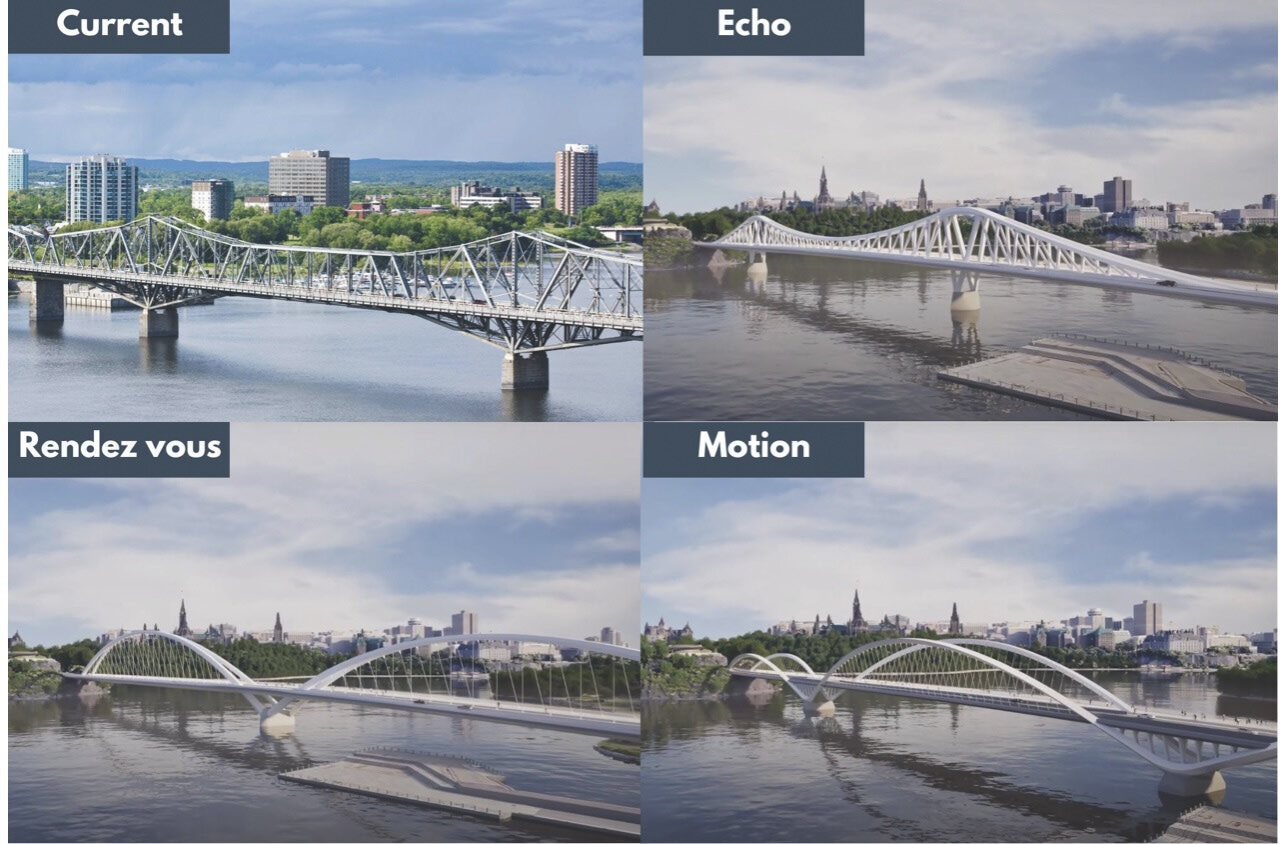New bridge options
Have your say on the designs shortlisted for the future Alexandra Bridge
Taylor Clark
Three shortlisted design concepts have been unveiled for the replacement of the historic Alexandra Bridge.
The designs dubbed Echo, Rendez vous, and Motion were presented to the board of directors of the National Capital Commission at a public meeting on October 1.
First serving as an interprovincial passage for trains, horse and wagons, electric streetcars, and pedestrians, the 123-year-old bridge was deemed to have reached the end of its life. In 2019, the Government of Canada directed the crossing to be replaced within 10 years.
Working with the public, Indigenous communities, and stakeholders since 2020, the Public Services and Procurement Canada and the National Capital Commission have narrowed down three concepts for the public’s viewing.
The first of the designs was Echo which reinterpreted the current bridge. But the design team’s lead bridge architect Martin Knight clarified that it was not a replica.
“The Echo bridge concept draws inspiration from the historic Alexandra Bridge, combining heritage with modern design. Featuring two V-piers and a refined twin structural truss, it honours the original bridge while remaining in scale with the landscape and with Kīwekī Point,” said Knight.
Spanning 210 metres, the concept would maintain a distinct identity while respecting the landscape of the National Capital Region. Indigenous expression was represented in the design with the inclusion of timbre members between the top cords, invoking the structural bracing of an Algonquin birchbark canoe.
The public spaces were marked by V-shaped supports. This gathering space could be enhanced with seating and seasonal canopies. Like all three design concepts, the pedestrian deck, and the public space were on the upstream side while the roadway was on the downstream. Cyclists would be able to breeze through the bridge’s centre without interrupting passersby with a naturally separated pedestrian deck.
Putting the Ottawa River centre stage as the defining environmental and social component of the landscape, the Rendez vous design wished to strengthen the concept of a meeting place.
“It appears to step lightly in the Kitche Zībī with a pair of graceful arches meeting at water level, acknowledging the river’s importance to the Algonquin Nations and defining a collective vision to create a bridge and urban landscape as a place of exchange,” said Knight.
The set of arches spanning 290 and 220 metres meet a single pier in the river. Although the pair reached more than 15 metres above the existing bridge at their crown, the architect said the arches’ height and transparency amplify views providing a feeling of openness. Where the arches dip below deck level, the public space forms creating a seasonal, flexible stage when closed to traffic.
The final design – Motion – took inspiration from the flow of the Ottawa River and the American eel which calls the river home. “The architectural approach effortlessly blends with its surroundings, weaving a harmonious tapestry of land, water, and sky.”
Its defining three rolling arches mimic the flowing water below, rippling up and down from end to end. The heights of the arches varied with the central arche measuring 3.5 metres taller than the existing bridge and secondary arches 3.5 metres lower, creating a dynamic silhouette that was still in scale with its surroundings.
“The signature form of the bridge marks a new destination for the National Capital core area and provides a rich experience when viewed from below as well as from afar, matching another unique element to this much-loved river scene.”
Two open houses were held in Gatineau and Ottawa to give attendees one-on-one time with the project team in early October. The public can also provide feedback on the three concepts by completing an online survey on the National Capital Commission website until October 24.
The comments will be considered in the final design concept, which will be submitted for approval in spring 2025. The replacement work was expected to begin in 2028 with the new bridge to be operational in 2032.





